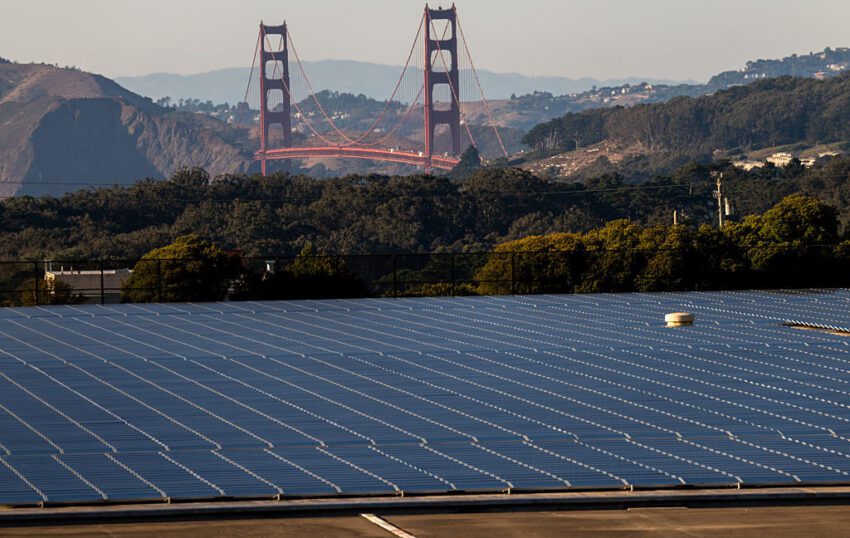
solar s growth in us almost enough Recent data indicates that the rapid growth of solar energy in the United States is nearly sufficient to counterbalance the increasing demand for electricity, driven largely by the expansion of data centers.
solar s growth in us almost enough
Rising Demand and Its Implications
Throughout 2025, concerns regarding the capacity of the U.S. electrical grid to accommodate surging electricity demand have been prominent in discussions among energy analysts and policymakers. As the year unfolded, the demand for electricity surged significantly, with reports indicating an increase of nearly 5 percent compared to the previous year. This spike raised alarms about a potential “data center apocalypse,” where the proliferation of data centers could overwhelm the existing grid infrastructure.
The implications of this rising demand are multifaceted. Increased electricity consumption can lead to higher energy costs for consumers and businesses, strain on the grid, and a resurgence in the use of fossil fuels, particularly coal. Indeed, the early months of 2025 saw a troubling trend: coal usage increased for the first time since its decline began, primarily due to the inability of renewable sources to keep pace with demand.
Early 2025: A Grim Outlook
The first quarter of 2025 painted a bleak picture for the U.S. energy landscape. Data released during this period revealed that total electricity demand had risen by 4.8 percent compared to the same quarter in the previous year. While solar power continued its impressive growth trajectory, expanding by an astonishing 44 percent, it was only able to meet approximately one-third of the increased demand. This shortfall, coupled with a decrease in natural gas consumption, resulted in a significant uptick in coal usage, which surged by 23 percent.
This alarming trend raised critical questions about the sustainability of the U.S. energy grid and the nation’s ability to transition to cleaner energy sources. The reliance on coal, a fossil fuel known for its high carbon emissions, contradicted the broader goals of reducing greenhouse gas emissions and combating climate change. The situation underscored the urgent need for a comprehensive strategy to enhance grid capacity and integrate renewable energy sources more effectively.
Mid-Year Developments: A Shift in Demand
As the year progressed, the narrative began to shift. Data released by the Energy Information Administration (EIA) indicated that electricity demand had stabilized, with a more modest increase of 2.3 percent over the first nine months of 2025. This deceleration in demand growth suggested that the initial surge might have been a temporary spike rather than a sustained trend.
The implications of this slowdown are significant. With a more manageable increase in demand, the capacity of solar energy to meet electricity needs has improved. The remarkable growth of solar power has positioned it as a pivotal player in the U.S. energy landscape, providing a viable alternative to fossil fuels and helping to mitigate the environmental impact of energy consumption.
Solar Power: A Bright Spot
The growth of solar energy in the United States has been nothing short of remarkable. In the first quarter of 2025 alone, solar power generation increased by 44 percent, reflecting a broader trend of investment and innovation in renewable energy technologies. This growth can be attributed to several factors:
- Technological Advancements: Innovations in solar panel efficiency and energy storage solutions have made solar energy more accessible and cost-effective.
- Government Incentives: Federal and state policies promoting renewable energy adoption have spurred investment in solar infrastructure.
- Public Awareness: Growing awareness of climate change and the environmental impact of fossil fuels has led consumers and businesses to seek cleaner energy alternatives.
Despite the challenges posed by rising demand, the solar sector has demonstrated resilience and adaptability. The ability of solar energy to grow at such a rapid pace indicates a shifting paradigm in the U.S. energy landscape, where renewables are increasingly seen as a viable solution to meet future energy needs.
Coal’s Resurgence: A Temporary Setback?
The increase in coal usage during the early months of 2025 raises important questions about the future of fossil fuels in the U.S. energy mix. While the uptick in coal consumption was largely attributed to the inability of renewable sources to keep pace with demand, it also highlights the fragility of the transition to cleaner energy.
Coal, once the dominant source of electricity generation in the United States, has seen a significant decline in usage over the past decade due to environmental regulations, market dynamics, and the rise of natural gas and renewables. However, the recent increase in coal consumption serves as a reminder of the challenges that remain in achieving a sustainable energy future.
Stakeholder Reactions
The resurgence of coal has elicited a range of reactions from various stakeholders, including environmental groups, energy companies, and policymakers. Many environmental advocates have expressed concern that the increase in coal usage undermines progress made in reducing greenhouse gas emissions. They argue that a continued reliance on fossil fuels could jeopardize efforts to combat climate change and achieve sustainability goals.
On the other hand, some energy companies have defended their use of coal as a necessary measure to ensure grid reliability during periods of high demand. They argue that while transitioning to renewable sources is essential, a balanced energy portfolio that includes fossil fuels may be necessary in the short term to meet immediate energy needs.
The Future of Solar Energy in the U.S.
Looking ahead, the trajectory of solar energy in the United States appears promising. The recent data suggests that solar power is well-positioned to play a critical role in meeting future electricity demand, particularly as technological advancements continue to improve efficiency and reduce costs.
Moreover, the ongoing efforts to enhance grid infrastructure and integrate renewable energy sources more effectively will be crucial in ensuring that solar energy can meet the needs of a growing population and economy. Policymakers will need to prioritize investments in grid modernization, energy storage solutions, and transmission infrastructure to facilitate the transition to a cleaner energy future.
Conclusion: A Path Forward
The growth of solar energy in the United States is a testament to the potential of renewable sources to transform the energy landscape. While challenges remain, particularly in the face of rising demand and the resurgence of coal, the data suggests that solar power is increasingly capable of offsetting electricity needs.
As the nation moves forward, a concerted effort to invest in renewable energy technologies, enhance grid capacity, and promote sustainable practices will be essential. The path to a cleaner, more resilient energy future is fraught with challenges, but the remarkable growth of solar energy offers a beacon of hope in the quest for sustainability.
Source: Original report
Was this helpful?
Last Modified: November 27, 2025 at 6:37 am
0 views















